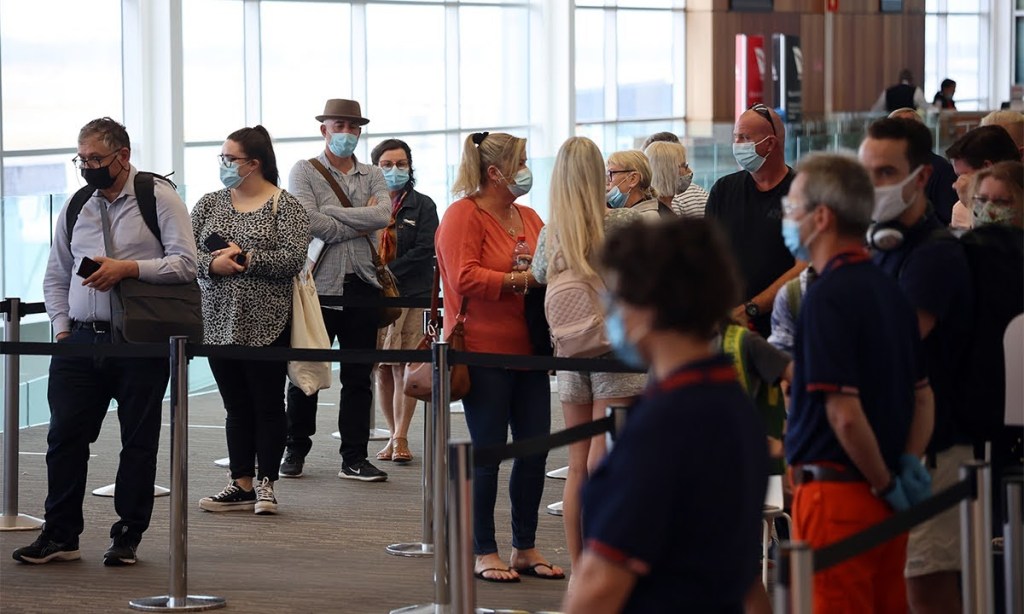Concerns over complex SA border system
New arrivals to South Australia will have to navigate a complex web of regulations and technology introduced with the border reopening on Tuesday, with experts fearing the requirements will provoke mass confusion.

As of Tuesday, new arrivals will need to set up a mySA GOV account through which they can complete an EntryCheck SA application.
They will then be required to use the HealthCheck SA app, also launching on Tuesday, which guides users through their quarantine, testing and symptom check requirements.
A third system, VaxCheck, will enable users to link their COVID-19 vaccination certificate to their mySA Gov account.
“We will start by only allowing people who are fully vaccinated into South Australia… more than 25,000 applications have been successfully processed,” South Australian Premier Steven Marshall told reporters on Monday.
Australian Medical Association South Australian President Dr Michelle Atchison expressed concern to InDaily that the reliance on technology would exclude some members of the population.
“The overarching issue is that not everyone is technologically ready or able, not everyone has a smartphone, not everyone is literate, not everyone speaks English as a first language,” Atchison said.
You might like
“I’ve just come back from a holiday where there was literally no phone reception, so the other issue is there are places in SA where relying on technology and apps is going to be difficult.”
University of South Australia epidemiologist Prof Adrian Esterman told InDaily the complex regulations were needed due to what he viewed as a premature reopening.
“I was extremely concerned about the border reopening and thought it was a couple of weeks early,” he said. “We still have pockets of SA with a low vaccine rate, so when we get some cases it is possible Covid will rip straight through those pockets of people and we see an epidemic of the unvaccinated.”
With that being the case, Esterman thinks the regulations are “sensible and careful”, but need to be communicated clearly.
“The actual regulations are quite complicated, it is up to the South Australian government to make sure the messaging is simple enough to understand, and up to people moving between states to make sure they understand them,” Esterman said.
Esterman added that he “hadn’t even heard” of the VaxCheck, EntryCheck SA and HealthCheck SA systems, but said SA Health had done well on technology rollouts to date.
Stay informed, daily
Labor shadow health minister Chis Picton said it was concerning South Australia is “still one of only two places in the country where you can’t connect your vaccination status to the QR code reader”.
“It would have been more prudent for the Marshall Government to have these systems in place weeks ago rather than launching them at the last minute before the borders open.”
The Government says that, from tomorrow, South Australians will be able to link their vaccination certificate to their mySA Gov account, via the Medicare app.

A spokesperson for the Department of Prime Minister and Cabinet told InDaily that VaxCheck will allow South Australians to integrate their digital COVID-19 vaccination certificate into their mySA Gov app.
“When someone visits a venue, they’ll be able to VaxCheck — show their check-in and vaccination status simultaneously, saving staff and customers time,” the spokesperson said.
Fully vaccinated visitors will be subject to different rules depending on where they have recently been, ranging from COVID tests before arrival and daily symptom checks for arrivals from areas with a vaccination double dose rate above 90 per cent, through to seven days of mandatory quarantine from areas with a rate below 80 per cent.
There are no restrictions for visitors from areas without Covid-19, while unvaccinated travellers will not be allowed into the state without an exemption.
An SA Health Facebook post on Saturday explaining the new regulations attracted a wave of comments critical of the complexity.
“These confusing and difficult to follow rules alone are going to prevent the massive wave of cases people seem to think are going to come here,” wrote Stuart Beven.








